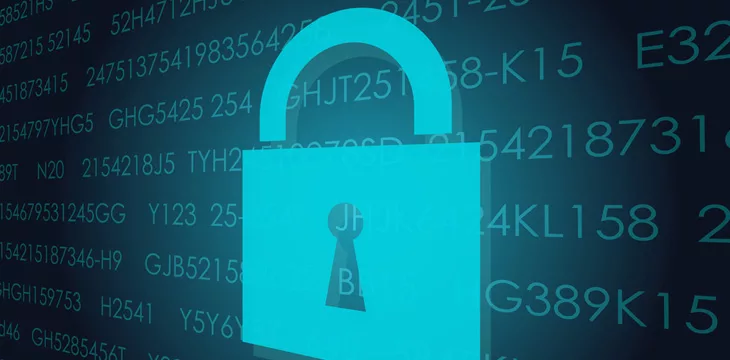|
Getting your Trinity Audio player ready...
|
This article was first published on Dr. Craig Wright’s blog, and we republished with permission from the author.
Cryptographic proof of ownership, under a framework that aligns with legal definitions of ownership, involves more than the mere possession of a digital asset or control of a private key. Instead, it necessitates the establishment of a secure, verifiable link between a digital asset and a real-world identity. This can be accomplished through a system akin to public key infrastructure (PKI), wherein a root key tied to a verified identity is the cornerstone of ownership. Legal ownership, therefore, remains invariably associated with the root key and the identity it represents. Implementing such a system harmonizes the cryptographic security and transparency benefits of blockchain technology with traditional legal principles of ownership, thereby potentially redefining the concept of digital ownership for the future.
Bitcoin technology and the blockchain provide a mechanism that can be used to manage digital assets. The mechanisms align with traditional legal concepts of ownership and identity. Ownership, as defined under most jurisdictions, including the U.K., inherently involves a link to a verifiable real-world identity. Mere possession or control of an asset does not equate to legal ownership.
The part of Bitcoin that had been missing was the development of a robust cryptographic system where the principles of public key infrastructure (PKI) would be applied. To address this requirement, identity systems that are timestamped against entries in the blockchain but allow real-world identity to be firewalled from public view must be created. This would involve establishing a root key tied to a verified real-world identity. The rightful owner would control this root key, serving as the foundation for generating a series of child keys for various purposes. Under this model, each child key would be used precisely once to sign a transaction or piece of data, ensuring its usage is unique and limiting the potential for unauthorized access or compromise. The signatures would then be recorded on a public, tamper-resistant ledger (the blockchain).
In the event of the root key being compromised, a predetermined process would enable its revocation and the establishment of a new root key. All such changes would also be recorded on the blockchain, providing a transparent, immutable transition record. Therefore, the mere possession of a private key does not, in itself, constitute ownership. Instead, legal ownership remains invariably linked to the root key and, by extension, to the real-world identity it represents. This model creates a cryptographically verifiable chain of ownership, preserving the property rights of individuals while ensuring their identities remain secure and verifiable.
Cryptographic proof of ownership, as defined within the white paper, never represented possession of the key. The term represents a system that aligns with traditional legal definitions and necessitates more than control over a private key or possession of a digital asset. Instead, the establishment of a secure, verifiable link between the asset and a real-world identity is required. This can be achieved through a system similar to PKI, where a root key associated with a verified identity forms the foundation of the cryptographic proof-of-ownership framework. Here’s how such a system could work:
- Identity Verification: The first step is establishing a verified identity for the individual or entity claiming digital asset ownership. This process would involve traditional means of identity verification, such as government-issued identification documents, biometric data, or other trusted methods.
- Root Key Generation: Once the identity is verified, a root key is generated for that identity. This root key serves as the foundation for establishing ownership of digital assets.
- Asset Registration: The asset is registered within the cryptographic framework to link a specific digital asset to the verified identity. This registration process includes creating a unique identifier for the asset and associating it with the verified identity’s root key.
- Digital Signature: When transferring ownership or asserting control over the digital asset, the verified identity signs a message or transaction using their root key. This creates a digital signature that anyone can verify using the corresponding public key associated with the root key.
- Verification and Validation: To validate the cryptographic proof of ownership, anyone can verify the digital signature using the public key associated with the root key. By confirming that the signature matches the registered asset and the verified identity, the ownership claim can be upheld.
- Trust and Certification Authorities: While Bitcoin distributes trust, trusted entities can act as certification authorities (CAs) within the framework to establish trust in the system. CAs would verify identities and issue root keys, ensuring the cryptographic proof of ownership aligns with traditional legal definitions.
Not all aspects of the system I created with Bitcoin were complete when I launched it. The underlying protocol was formed. Yet, the components associated with an identity that I noted were firewalled from the primary blockchain remained as needing to be built. The Bitcoin white paper mentioned the construction of an alert system. It noted the need to complete simplified payment verification (SPV). When I released Bitcoin, the centre or core distributed timestamp server and logging system were released. All other aspects of the system still needed to be built.
With the implementation of the system, cryptographic proof of ownership can go beyond the false and misleading premise of mere possession of private keys somehow being linked to identity or control over digital assets. It provides a verifiable link between the asset and a real-world identity, aligning with established legal frameworks and enabling secure ownership claims in the digital realm.
Cryptographic proof of ownership, in the legal sense, is about more than just possessing a private key; it’s also about establishing a link between a digital asset and a verifiable real-world identity. For example, a user could be issued with an identity key which could be attested by multiple parties, including the government. The user could periodically attest to the control of the key over time or note that the key has been compromised and revoke it using the blockchain—in which case a new identity key would need to be issued.
If information concerning the user’s identity has been stalled over time, the revocation and reissue would be easy. Yet none of it determines cryptographic proof through possession alone.
Watch: The core of Web3 is data ownership

 06-30-2025
06-30-2025 





